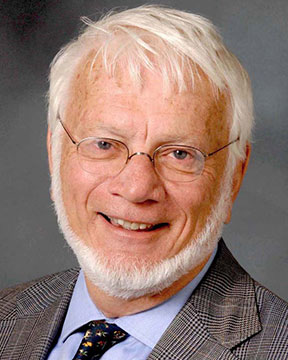ORALS
SESSION: ManufacturingWedPM2-R4
Environmental Aspects / Impact on Climate Change | Mamalis International Symposium on Advanced Manufacturing of Advanced Materials and Structures with Sustainable Industrial Applications |
| Wed Nov, 7 2018 / Room: Sao Conrado (50/2nd) | |
| Session Chairs: Sesh Commuri; Session Monitor: TBA |
16:45: [ManufacturingWedPM211]
Reduction of Transport Impact on Air Quality due to New Conception of Hydrogen Storage Tetiana
Prikhna1 ;
Mykola
Monastyrov2 ; Petro
Talanchuk
3 ;
Athanasios G.
Mamalis4 ;
Fernand
Marquis5 ; Bernd
Halbedel
6 ;
1Institute for Superhard Materials, Kiev, Ukraine;
2Open International University of Human Development Ukraine, Kiev, Ukraine;
3Open International University of Human Development Ukraine, Kyiv, Ukraine;
4PC-NAE, Demokritos National Center for Scientific Research, Athens, Greece;
5San Diego State University, San Diego, United States;
6Technische Universitat Ilmenau, Ilmenau, Germany;
Paper Id: 140
[Abstract] The new conception of hydrogen production on the board of transport vehicles was due to the reaction of metallic Al powder produced by the developed high productive electroerosion dispersion (EED) method with slightly alkaline water [1]. The developed EED method allows production of Al powder of 98% purity with spherical shape 0.05 - 3-5 microns particles (with near 8 vol.% of 0.05-0.1 microns particles), specific surface up to 120 m2/gr (determined in accordance with the ISO 10076). The poly-dispersed nature of the Al powder permits its dense packing qua PAS. The presence of a nanofraction enables a short reaction induction period. It is mainly due to the presence of nanoparticles that the reaction response time is lowered from 7 to 2 s, which in the case of a transport vehicle will enable the essential volume minimization of the intermediate container. As a result of the reaction of one kilogram of aluminum powder, more than 111 grams of hydrogen are released, which is equivalent to 1.23 m3 of gaseous hydrogen (taking the hydrogen density to be 0.09 kg/m3 at 18°C and 0.1 MPa). The packed density of the aluminium powder was determined with the help of a Scott volumeter according to ISO 3923-2, and was found to be 1240 kg/m3. From a volume of one litre filled with this powder, 1.52 m3 of gaseous hydrogen can be obtained.
Further, the systematic approach to reduce heat dissipation and increase efficiency will be realized due to the use of advanced thermoelectrical transformation systems and new type of propulsion engine.
References:
[1] M. Monastyrov, T. Prikhna, A. G. Mamalis, W. Gawalek, P. M. Talanchuk, R. V. Shekera, Electroerosion dispersion-prepared nano- and submicrometre-sized aluminium and alumina powders as power-accumulating substances, Nanotechnology Perceptions. 4 (2008), 179-187
SESSION: AdvancedMaterialsMonAM-R6
| 4th Intl. Symp. on New and Advanced Materials and Technologies for Energy, Environment and Sustainable Development |
| Mon Nov, 5 2018 / Room: Guaratiba (60/2nd) | |
| Session Chairs: Fernand Marquis; Alain Tressaud; Session Monitor: TBA |
11:45: [AdvancedMaterialsMonAM02] Invited
Development of Hybrid Reinforced Corrosion Resistant Polymer Concretes Nikoloz
Chikhradze1 ;
Fernand
Marquis2 ; Guram
Abashidze
1 ; Davit
Tsverava
3 ;
1G. Tsulukidze Mining Institute, Tbilisi, Georgia;
2San Diego State University, San Diego, United States;
3LEPL Grigol Tsulukidze Mining Institute/M.Sc. Student of Georgian Technical University, Tbilisi, Georgia;
Paper Id: 59
[Abstract] Polymer concretes, unlike common concrete (produced based on cement, as cohesive material), are notable for high durability on compression 50-90 MPa, and especially, on tension 6-10 MPa, with unique corrosion resistance. However, they are also associated with negative properties, such as high creep deformability. Because polymer concretes work well on tension, their application is prospective for the production of shock resistant construction materials, but for this, strengthening by additional reinforcing mechanisms is necessary. In addition, because of differences in the durability and deformability on compression, as well as on tension, it is important to reinforce the polymer concrete's tensile and bended properties.
This work presents and discusses the reinforcement of polymer concrete by hybrid fibers. The major goal of this work is the production of such polymer concretes with high durability on tension and high shock resistance that preserves these properties under the effect of aggressive environments. The primary cohesive materials are unsaturated polyester resins, as polymers. The fiber reinforcements (coarse and fine) are primarily three types of basalt, polypropylene, two types of metal fibers, andesite and quartz, all selected for their chemical resistance and durability. The technological parameters for the production and processing of nano and ultrafine dispersive powders from rocks using vibration and planetary mills, and the physical and mechanical properties of these concretes are presented and discussed. The data on the corrosion resistance of these processed polymer concretes (corrosion resistance coefficient, diffusion coefficient of aggressive liquids, coefficient of liquids- sorption, and the coefficient of liquids penetration in the concretes) are also presented and discussed.
SESSION: AdvancedMaterialsMonPM1-R6
| 4th Intl. Symp. on New and Advanced Materials and Technologies for Energy, Environment and Sustainable Development |
| Mon Nov, 5 2018 / Room: Guaratiba (60/2nd) | |
| Session Chairs: Janina Molenda; Michael Zharnikov; Session Monitor: TBA |
15:15: [AdvancedMaterialsMonPM108] Invited
Fabrication of Nanocomposites by Mechanical Alloying and Explosive Consolidation Nikoloz
Chikhradze1 ; Guram
Abashidze
1 ;
Fernand
Marquis2 ; Mikheil
Chikhradze
3 ;
1G. Tsulukidze Mining Institute, Tbilisi, Georgia;
2San Diego State University, San Diego, United States;
3Georgian Technical University, Tbilisi, Georgia;
Paper Id: 212
[Abstract] Bulk nanostructure materials are characterized by high specific strength, hardness, corrosion, and wear resistant properties, and in particular, conditions by super-plasticity [1, 2, 3]. They exhibit specific electrical, thermal, magnetic, optical, chemical and other properties. Accordingly, the demand on nanoparticles and bulk nanocomposites in increased for practical application. Therefore, the development of new technologies for fabrication of bulk nanocomposites is big challenge.
This paper consists of an experimental investigation and manufacture of multifunctional bulk nanostructured composite materials in Ti-Al-B-C, Si-B-C, SiC-B-C B<sub>4</sub>C-SiC, B<sub>4</sub>C-Si-C systems.
The coarse crystalline Ti, Al, amorphous Boron and Carbon (Graphite) elementary pure (at least 98%) powders were used as precursors. The blend with different percentage contents of the powders were prepared. The high energetic "Fritsch" Planetary ball mill was used for blend processing, mechanical alloying, amorphization, and nanopowder production. The time of processing varied in range of: 1-36h. The optimal technological regimes for nanopowder preparation are determined experimentally. Ball milled blend compacted by explosive consolidation technology and bulk composite materials are fabricated. For shock wave generation, the industrial explosives and new explosives obtained from decommissioned weapons were used in the experiments. The technological parameters of the explosive consolidation and the structure-properties relationship are presented and discussed in the paper.
References:
[1] The Second World Space Congress, 10-19 October, 2002, Houston, TX, USA., I-4-03IAF, 34th COSPAR Scientific Assembly
[2] R. Mania, M. Dabrowski et all, International Journal of Self-Propagating High-Temperature Synthesis. 2003 v. 12, #3, 159-164
[3] R.M. Da Rocha, Chapter in Ceramic Engineering Science Proceeding, Jan., 2010
15:40 Break
SESSION: AdvancedMaterialsMonPM2-R6
| 4th Intl. Symp. on New and Advanced Materials and Technologies for Energy, Environment and Sustainable Development |
| Mon Nov, 5 2018 / Room: Guaratiba (60/2nd) | |
| Session Chairs: Joseph Newkirk; Session Monitor: TBA |
16:20: [AdvancedMaterialsMonPM210] Invited
Electroerosion Coagulation and Dispersion for Complex Water Purification, Waste Recycling and Manufacturing of Metals, Oxides, and Alloys Nanopowders Mykola
Monastyrov1 ;
Tetiana
Prikhna2 ; Bernd
Halbedel
3 ; Gennadii
Kochetov
4 ;
Fernand
Marquis5 ;
1Open International University of Human Development Ukraine, Kiev, Ukraine;
2Institute for Superhard Materials, Kiev, Ukraine;
3Technische Universitat Ilmenau, Ilmenau, Germany;
4NATIONAL UNIVERSITY OF CONSTRUCTION AND ARCHITECTURE, Kyiv, Ukraine;
5San Diego State University, San Diego, United States;
Paper Id: 122
[Abstract] The application of electroerosion coagulation together with in-situ manufactured polyvalent powdered aluminium oxides and iron oxides allowed efficient water purification from heavy metal ions and radioactive alkali ions (Fe, Cr, Cu, Mo, Zn, Co, Ni, Cd, Mn, As, Sn, Pb, Al, Ba, Cs and Sr) as well as from organic contaminations (from the liquid waste landfills, in particular) [1]. The method of electroerosion dispersion is very effective for production of nanopowders (5-500 nm) of metals, oxides, nitrides and carbides, as well as for recycling of any conductive materials such as cemented carbides, alloys of heavy metals, any metallic granules or chips, cans, etc [2]. The iron magnetic nanoparticles produced by electroerosion dispersion have considerable interest in many fields of research and application due to their attractive properties. They have high potential for applications in the field of biomedical sciences (diagnostics and therapy), ferrofluids, catalysis, colored pigments, high-density magnetic recording, printer toners, Li-ion batteries, wastewater treatment and absorption of electromagnetic waves.
References:
[1] M. Monastyrov, T. Prikhna, B. Halbedel, P. Talanchuk, G. Kochetov, A. Vasiliev, M. Eisterer, F. D. S. Marquis, New technology for the integrated treatment of industrial and landfills waste water using iron and aluminum oxides nanopowders, In: Proceedings 2017 Sustainable Industrial Processing Summit and Exhibition, Volume 5: marquis Intl. Symp./ New and Advanced Materials &Technologies for Energy, Environment, and Sustainable Development, Edited by: F.Kongoli, F. Marquis, N. Chikhradze, Flogen, 2017, 346-355.
[2] M. Monastyrov, T. Prikhna, A. G. Mamalis, W. Gawalek, P. M. Talanchuk, R. V. Shekera, "Electroerosion dispersion-prepared nano- and submicrometre-sized aluminium and alumina powders as power-accumulating substances, Nanotechnology Perceptions", 4 (2008), 179-187
SESSION: AdvancedMaterialsTueAM-R6
| 4th Intl. Symp. on New and Advanced Materials and Technologies for Energy, Environment and Sustainable Development |
| Tue Nov, 6 2018 / Room: Guaratiba (60/2nd) | |
| Session Chairs: Raphael Semiat; Alexander Yarin; Session Monitor: TBA |
12:10: [AdvancedMaterialsTueAM03] Keynote
Wear-resistant MAX phases-based Materials of Ti-Al-C System for Electrical Transport Tetiana
Prikhna1 ; Orest
Ostash
2 ; Vladimir
Sverdun
1 ; Viktoriya
Podhurska
2 ;
Fernand
Marquis3 ; Myroslav
Karpets
1 ; Semyon
Ponomarov
4 ; Alexandra
Starostina
1 ; Thierry
Cabioc'h
5 ;
1Institute for Superhard Materials, Kiev, Ukraine;
2Karpenko Physical-Mechanical Institute of the National Academy of Sciences of Ukraine, Lviv, Ukraine;
3San Diego State University, San Diego, United States;
4Institute of Semiconductor Physics, Kiev, Ukraine;
5Universite de Poitiers, CNRS/Laboratoire PHYMAT, Chasseneuil Futuroscope Cedex, France;
Paper Id: 125
[Abstract] MAX phases combined best properties of metals and ceramics [1-3]. Short-time synthesis under relatively low (10-15 MPa) pressures using hot pressing technique allowed us to obtain MAX-phase-based materials suitable for manufacturing of current-loaded inserts of pantographs. The most effective appeared to be the material containing 93% Ti<sub>3</sub>AlC<sub>2</sub>, 4% TiC and 3% Al<sub>2</sub>O<sub>3</sub>. Its wear after the 5 km of friction path in contact with copper under 0.25 MPa load (which is typical for pressing pantographs to electrical wire) was 0.0003 g, and the wear of the counter body (copper M1) at this was 0.0011 g. The wear of MAX-phase-based material was 20 times less than the wear of silumin AK (which is used for electrical transport pantographs manufacturing) and the wear of copper in contact with MAX phase occurred to be 10 times less than its wear in contact with silumin AK. It has been found that the amount of Ti<sub>3</sub>AlC<sub>2</sub> (or 312), Ti<sub>2</sub>AlC (or 211), TiC and the material density effect the wear resistance of MAX-phases-based materials. The wear of highly dense materials based on MAХ phases containing both phases of structural types 312 and 211 (61% Ti<sub>3</sub>AlC<sub>2</sub>, 22% Ti<sub>2</sub>AlC, 17% TiC (I) and 40% Ti<sub>3</sub>AlC<sub>2</sub> + 60% Ti<sub>2</sub>AlC (II)), when rubbed in pairs with copper M1 under 0.25 MPa, after 5 km of the path was 0.0005 g and 0.0018 g of composition (I) and (II), respectively, while the wear of the silumin was much higher: 0.0228 g and 0.022 g, respectively.
References:
[1] Barsoum M., In: Prog. Solid St. Chem. 28 (2000) 201-81.
[2] Prikhna T, Starostina A, Petrusha I, Ivakhnenko S, Borimskii A, Filatov Yu, Loshak M, Serga M, Tkach V, Turkevich V, Sverdun V, Klimenko S, Turkevich D, Dub S, Basyuk T, Karpets M, Moshchil' V, Kozyrev A, Il'nitskaya GD, Kovylyaev V, Lizkendorf D, Cabiosh T, Chartier P., Journal of Superhard Materials 36(1) (2014) 9-17.
[3] J. Halim, P. Chartier, T. Basyuk, T. Prikhna, E.N. Caspi, M.W. Barsoum, T. Cabioc'h, 37 (2017) 15-21.
SESSION: AdvancedMaterialsTuePM3-R6
| 4th Intl. Symp. on New and Advanced Materials and Technologies for Energy, Environment and Sustainable Development |
| Tue Nov, 6 2018 / Room: Guaratiba (60/2nd) | |
| Session Chairs: Pengwan Chen; Werner Urland; Session Monitor: TBA |
17:40: [AdvancedMaterialsTuePM313] Keynote
Synthesis and Densification of Heterogeneous Ultrafine and Nanostructured Materials by High Rate Energy Processes Fernand
Marquis1 ;
Nikoloz
Chikhradze2 ;
Tetiana
Prikhna3 ;
Pengwan
Chen4 ; Eugene
Olevsky
1 ;
1San Diego State University, San Diego, United States;
2G. Tsulukidze Mining Institute, Tbilisi, Georgia;
3Institute for Superhard Materials, Kiev, Ukraine;
4Beijing Institute of Technology, Beijing, China;
Paper Id: 422
[Abstract] Because the strength, toughness, and other engineering properties of heterogeneous materials are strongly dependent on their grain size and density, the quest to achieve simultaneously dense and fine, ultrafine, and nanostructured grain size materials has been one of the most important issues in materials science and engineering. In this work we explore novel approaches for producing dense and fine, ultrafine and nanostructured heterogeneous materials. Typical approaches consist of acoustic cavitation, high energy planetary ball milling, reaction synthesis, and shock synthesis and modified spark plasma synthesis, followed by dynamic and static consolidation and densification pre- and post-reaction synthesis. Typical heterogeneous multiphase, multi microstructural constituent materials covered in this work consist of tungsten heavy alloys, coated graphite powders, metal silicide and aluminides and ceramic composites. The synthesized and densified materials were fully characterized by OM, SEM, TEM, EDX analysis, quantitative image analysis, X-Ray diffraction and mechanical testing. This paper presents and discusses the effect of reaction and processing parameters on the microstructure, densification and strength and toughness of typical heterogeneous materials.
SESSION: AdvancedMaterialsWedPM1-R6
| 4th Intl. Symp. on New and Advanced Materials and Technologies for Energy, Environment and Sustainable Development |
| Wed Nov, 7 2018 / Room: Guaratiba (60/2nd) | |
| Session Chairs: Marina Nisnevitch; Session Monitor: TBA |
14:50: [AdvancedMaterialsWedPM107] Invited
Hot Pressed Aluminum Dodecaboride- and Boron Carbide-based Ceramics Tetiana
Prikhna1 ; Pavlo
Barvitskiy
1 ; Viktor
Moshchil
1 ; Vladislav
Domnich
2 ;
Fernand
Marquis3 ; Myroslav
Karpets
1 ; Sergey
Dub
1 ; Semyon
Ponomarov
4 ; Richard
Haber
2 ;
1Institute for Superhard Materials, Kiev, Ukraine;
2Rutgers University, New Brunswick, United States;
3San Diego State University, San Diego, United States;
4Institute of Semiconductor Physics, Kiev, Ukraine;
Paper Id: 119
[Abstract] The results of a structural and mechanical properties study of aluminum dodecaboride (a-AlB<sub>12</sub>, AlB<sub>12</sub>C<sub>2</sub>, a-AlB<sub>12</sub>-TiB<sub>2</sub>-TiC)- and boron carbide (B<sub>4</sub>C and B<sub>4</sub>C-SiC)-based ceramics, hot pressed at 30 MPa, 1950 - 2240°C, and high pressure (2 GPa) as well as high temperature (1200-1400°C) sintered and synthesized, will be under discussion. The materials can be used as protective armor or constructional ceramics for nuclear power plants, additives to the boron-carbide-based materials, or as solid fuel, abrasives, explosives, etc. [1-5]. The materials were manufactured from a-AlB<sub>12</sub>, AlB<sub>12</sub>C<sub>2</sub>, C nanopowders and B<sub>4</sub>C, SiC, TiC micropowders. The preliminary mixtures of powders were prepared using high speed planetary activator. The a-AlB<sub>12</sub> powder with and without carbon additions can be sintered to the dense state of 1200-1400°C, 2 GPa, 1 h, while the hardness of the materials was not high (12.5-17.8 GPa at 49 N-load). The AlB<sub>12</sub>C<sub>2</sub> nanopowder sintered at 1400°C, 2 GPa, 1 h contained 89 wt.% AlB<sub>12</sub>C<sub>2</sub> and 11 wt.% of admixture Al<sub>2</sub>O<sub>3</sub> (according x-ray diffraction study) and demonstrated hardness HV(49 N-load)=26.6-0.6 GPa, fracture toughness K<sub>1<i>c</i></sub> (49 N)=5.9-0.5 MPa-m0.5, density g=2.73 g/сm<sup>3</sup>. The materials obtained at 30 MPa, 2240-1950°C had much higher characteristics. γ-AlB<sub>12</sub> (94-98 wt.%, p=2.53-2.58 g/cm<sup>3</sup>) showed HV(49 N)=24.1 GPa; K<sub>1<i>c</i></sub> (49 N)=4.9 MPa-m0.5; bending R<sub>bs</sub>=336 MPa and compressive R<sub>cs</sub>=378 MPa strengths. Composite 74 wt.% AlB<sub>12</sub>C<sub>2</sub>, 22 wt% TiB<sub>2</sub> , 4 wt% Al<sub>2</sub>O<sub>3</sub> (p=3.1 g/сm3) had HV(49N)=37.65-6.74 GPa, K<sub>1<i>c</i></sub>(49 N)=5.2 MPa-m0.5, R<sub>bs</sub> = 646 MPa and R<sub>cs</sub> =795 MPa. B4C(p=2.52 g/сm3<sup></sup>) demonstrated HV(4.9 N)=40 GPa, K<sub>1<i>c</i></sub> (3-point bending)=4.89 MPa-m0,5, R<sub>cs</sub>=392 MPa, R<sub>cs</sub>=1551 MPa and B<sub>4</sub>C-20%SiC (p = 2.67 g/cm<sup>3</sup>) had HV(49 N)= 35 GPa, K<sub>1<i>c</i></sub>(3-point bending)=5.9 MPa-m0,5, R<sub>bs</sub>=474 MPa, R<sub>cs</sub>=1878 MPa.
References:
[1] Kisly, P. S., Neronov, V.A., Prikhna, T. A., Bevza, Yu.B. (1990). Aluminum borides, Kiev, Naukova Dumka, 1-192. (in Russian) (Кислый П. С., Неронов В. А., Прихна Т. А., Бевза Ю. В. Бориды алюминия. К.: Наук. Думка, 1990. 192 с).
[2] Whittaker, M. L., (2012) Synthesis, characterization and energetic performance of metal boride compounds for insensitive energetic materials, Thesis for the degree of Master of Science : - The faculty of the University of Utah Department of Materials Science and Engineering, University of Utah.
[3] Domnich, V., Reynaud, S., Haber, R.A., Chowalla, MJ. Am. Ceram. Soc., 94 (2011) 3605-3628.
[4] Prikhna, Т. A., Barvitskiy P. P., Karpets М. В., Muratov V. B., Sverdun V. B., Haber R., Kartuzov V. V., Moshchil V. E., Dub S. N., Loshak M. G., Alexandrova L. I., Kovylaev V. V., Garbuz V.V., Marchenko A. A., J. Superhard Materials, 39(5) (2017) 299-307.
[5] Prikhna, Т.А., Haber, R. A., Barvitskiy, P. P., Sverdun,V. B., Dub, S. N., Muratov, V. B., Domnich , V., Karpets, М. V., Moshchil, V. E., Loshak, М. G., Kovylaev, V.V., Vasiliev O.O., Proceedings of the 41st International conference and exposition on advanced ceramics and composites, January 22 - 27, 2017, Daytona Beach, Fla., USA., http://acumen-va-publish.com/ACerS/ICACC_2017/toc.html.



















